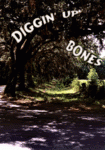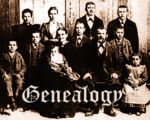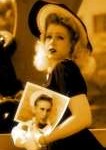The Value of Genealogy Communities
November 4, 2011 by ramona
Filed under Genealogy for Beginners, Genealogy Research Resources, Making genealogy Connections; Reaching out
 Genealogy communities have sprung up all over the internet. They come in all shapes and sizes, from online search sites with databases, surname registries, one name study groups and professional societies, to groups like Genealogybeginner that focus on the needs of beginning genealogists. What they all have in common is a group of people who share a passion for researching their family tree. That is why genealogy communities and groups have become so popular.
Genealogy communities have sprung up all over the internet. They come in all shapes and sizes, from online search sites with databases, surname registries, one name study groups and professional societies, to groups like Genealogybeginner that focus on the needs of beginning genealogists. What they all have in common is a group of people who share a passion for researching their family tree. That is why genealogy communities and groups have become so popular.
Belonging to one or even several online genealogy communities can have great benefits to genealogists both beginner and advanced.
Deciding what group is right for you?
When looking at the benefits of joining a genealogy community it is a good idea to first determine your own needs and then define what you expect to get out of your membership. Some things for the beginning genealogist to consider before signing up are the size of the group, as well as its main function. Many genealogy groups focus on the needs of professional genealogists and although they offer resources that may help you with your family tree research, they sometimes do not provide the assistance needed to use those resources. In addition, many online genealogy communities are quite large and it is easy to become lost in the shuffle; with your important questions going unanswered.
What are the elements of a great genealogy community?
So what are the needs of a beginning genealogist? The biggest need is for education and instruction. Understanding not only what information you should be looking for but also how to find it, document it and apply it to your family tree. Next is the need for access to help, belonging to a community that is readily available to afford you, the beginning genealogist, with important resources such as great downloadable family tree templates, useful links and informative articles. In addition, providing answers to your key questions in a timely manner should be on your high on your list of priorities.
Now the question becomes, what genealogy communities may exist that meets your specific needs? What you want here is a community that can grant you access to an informative and relevant article database or Blog, offer quality instruction and classes, have a community meeting place or forums and finally someone (preferably a live experienced and friendly resident genealogist) who will be available to answer your questions. On top of this, you will want a group that keeps abreast of genealogy news and will inform you when new records become available, records that will help with your search interests. Finally, you want it to be fun, positive and encouraging.
Making the most of your genealogy community
The next part of this equation lies with you, once you have found your genealogy community it is up to you to make the most of it. What that means is involvement. Personal involvement equals participating in forums (not just lurking) and networking with the greater community. Participation broadens your scope; you could find hidden resources you would never have guessed at, such as meeting another member with similar interests and helpful information. Without participation, there is no community.
Wrap Up
Finding the right genealogy community can be a great motivational tool for beginning genealogists who soon learn that the pursuit of their family history can be an isolating experience. For those times when your friends and loved ones fail to understand your excitement over some dusty old record or question your sanity due to your preoccupation with visiting cemeteries, having a community of like minded ancestor hunters can be a great blessing.
Of course, I recommend our community here at Genealogybeginner as your fist stop and invite you to come join us on our forums. To get started sign up for our two week free trial and then jump on over to the Coffee Shop and introduce yourself or jump right in with a question on the Ask A Genealogists board.
Genealogy News: Over 172 Million New Records for your Family Tree
November 4, 2011 by ramona
Filed under Articles, Latest News
 October has been a very busy month for family tree enthusiasts on the internet and genealogy Sites are bursting at the seams with new records on an international scale. There are new additions to databases from Canada, Europe, Ireland, Scotland England and the US, giving a combined total of 172,082,000.00 plus records. All made available in October alone.
October has been a very busy month for family tree enthusiasts on the internet and genealogy Sites are bursting at the seams with new records on an international scale. There are new additions to databases from Canada, Europe, Ireland, Scotland England and the US, giving a combined total of 172,082,000.00 plus records. All made available in October alone.
The new records come in great variety, from Home children, Poor Law Immigrants, land records, baptisms, marriages, deaths, prison records, estate files and much more.
North American Records
In Canada, additions were made to the Home Children database at Library and Archives Canada with 20,000 new names added. The new names, extracted are from the Canadian Passenger lists collection 1925 to 1932. Each record contains the name and age of the child, name and type of ship along with both the dates and ports of arrival and departure.
Another October contribution from Canada comes via Olive Tree Genealogy and includes a database of Poor Law immigrants 1836 to 1871. The English Poor Law was legislation that made immigration available to very poor UK citizens living in workhouses. The law allowed immigration to the British Colonies of Australia, New Zealand and Canada. Thanks to Olive Tree, there is a new compilation of immigrants from 23 ships available on their site.
With the addition of 134 million newspaper articles GenealogyBank leads the pack for this resource while FamilySearch backs up the US contribution with 281,000 estate files for North Carolina 1663 to 1917.
For military records look to FindMyPast, they have published approximately 10,000 records of allied POW’s for WWII. These records are of soldiers who had escaped or attempted escape from POW camps through central Europe. The information available in this record collection is name, rank, serial number and references to files kept in the National Archives. You may also find references to the POW camp where the prisoner was held, along with their date of capture.
European Records
FamilySearch has done it again with the addition of 220,000 plus land records originating from the Czech Republic. The land records cover the period 1450 to 1850 and can be accessed through “Browse-Only” also known as Waypointing (see, LDS Family Search: How to access un-indexed records for the Genealogy Beginner). The images themselves largely predate parish records and although the value of these resources cannot be questioned translation may be necessary.
(In addition to this, FamilySearch has also made 289,000 images available containing the land records of Guam 1898 to 1964.)
New Records from Great Britain
October online searches continue to amaze as Irelands, FindMyPast includes Irish Prison Records 1790 to 1924. This record set contains 2.7 million records and is a first time online premier. Director of FindMyPast, Brian Donovan states, “These records provide an invaluable resource for anyone tracing their Irish ancestors, as during the period covered almost every household in Ireland had a convict in their family. These records provide such a wealth of information that they are sure to shock and surprise almost anyone looking for the missing links in their Irish family tree.”
Chalk up another fantastic genealogical resource to The Ireland Genealogy Project. With an update to the Royal Irish Constabulary records, this collection covers Derry/Londonderry, Kerry, Kildare, Kilkenny, Limerick, Longford and Offaly for 1845. Best of all it access to the records are entirely free.
Those of you with Irish roots will be even more excited to know that Roots Ireland and IrishGenealogy have also had a very busy October. Over 543,000 birth and baptism records for Waterford have been added to the Roots Ireland database. With a substantial contribution of their own, IrishGenealogy has included more Roman Catholic Church records covering Carlow, Cork, Dublin and Kerry. IrishGenealogy is the website of the Irish government and access is free of charge.
In Scotland, FamilyRelatives offers up a banquet of trade directories, adding over 80 volumes from Pigot’s Directory Scotland. The Directories cover the years 1825 to 1826, 1837, 1902 and 1912.
More New Records From Great Britain
Not to be outdone by their neighbors, the UK’s GenesReunited, Anscestry.co.uk, and TheGenealogist.co.uk all have made an October contribution.
GenesReunited has updated their already considerable collection with 35 million parish records. Included in this compilation are baptismal, marriage and death records in addition to Boyde’s Marriage Index 1538 to 1840. Access to these records requires a subscription that is well worth it.
If you have been looking for parish records from Warwickshire and Dorset with Dorset Poor Law records inclusive, then you should check out Ancestry.co.uk. The new record additions cover a wide span beginning in 1910 with some records reaching into the 1500’s.
Finally yet importantly, TheGenealogist.co.uk released the 1911 census records for Wales, Kent and the Isle of Man. Available with these long awaited records are high-resolution images, in color.
October Wrap Up
What an incredible ancestor filled October it has been and how fitting during Family History Month to have so many additional resources contributed. For more information on how to access these great new records, existing members can join us on the forums at Genealogy News and Events
If you are not yet a member, take advantage of our two-week free trial and join us on the forums today.
Genealogy for Halloween: A Treat from Genealogybeginner.com
October 27, 2011 by ramona
Filed under Articles, Latest News
 Genealogy and Halloween go together like “Trick or Treat”. After all, who is more interested in the spirits of the past than your average ancestor hunter. If you needed any more proof of that, you would not have to go farther than a visit to some of the preeminent genealogy sites and blogs, such as GeneaBloggers or Genealogy.com.
Genealogy and Halloween go together like “Trick or Treat”. After all, who is more interested in the spirits of the past than your average ancestor hunter. If you needed any more proof of that, you would not have to go farther than a visit to some of the preeminent genealogy sites and blogs, such as GeneaBloggers or Genealogy.com.
Here is a look at how the genealogy community is celebrating this holiday in spooktacular style
A Halloween themed Radio show
Set your calendar for Friday October 28 to catch “Haunted by Ancestors – A Genealogy Halloween Special!” presented by GeneaBloggers at: http://www.blogtalkradio.com/geneabloggers/2011/10/29/haunted-by-ancestors–a-genealogy-halloween-special. The show will feature professional genealogist Henry “Hank” Jones Jr., who will be speaking on his book “PSYCHIC ROOTS: SERENDIPITY & INTUITION IN GENEALOGY”. Other guests included in the October 28 radio show are Paul J. Bunnel, genealogist slash certified Ghost Hunter and Melinde Lutze Byrne, vice president of the American Society of Genealogists and former skeptic. The show is moreover proclaiming a mystery guest, someone who will make an important announcement asserted to be of great interest to the genealogy community. GenealogyBloggers Radio certainly promises an entertaining evening of bone digging fun.
Historic Halloween pranks
Over at Genealogybank you can find an entertaining post titled “Halloween ‘Tricks’—One Subtle, the Other a Blast”. Offering an interesting historic look at the “trick” side of this well-loved celebration, Genealogybank has tracked down a couple of old newspaper articles based on the past hijinks of Halloween tricksters. Sharing some of the fun genealogists can find in searching newspaper archives and giving us a very instructive read.
From the graveyard
A Spooky Genealogy: A Cemetery Find is what you will find when you go Trick or Treating at the Ancestor chase Blog. A visit to this site will give you the chills as they recount the tale of a strange and unexpected genealogy discovery. One that was perchance initiated from beyond the grave, by those lost from the family tree record.
Genealogy.com is joining in the Halloween amusement with a fantastic article on cemetery searches. The article covers Getting Started with Cemetery Records as well as Cemetery Records and Gravestones. In addition to this wonderful information, there are some great tips on finding additional sources for your cemetery search.
Show of your generations
MyHeritage.com is holding a Halloween Family Photo competition, what they are looking for are creative and original photos of families dressed up in their Halloween best. Uploading your favorite family Halloween picture, old or new, onto their Facebook page could win you a premium subscription at MyHeritage.com. Contest entry ends November 1, 2011. For more information, give them a visit.
Story time
If spooky stories of generations past are what you have in mind this Halloween, then Ancestry.com should be on your list with a message board dedicated solely to scary ancestral tales.
In the news
A week of Family Tree Halloween merriment would not be complete without this wonderful headline maker from The Associated Press.
Prince Charles linked to Dracula
“LONDON The truth is out: Prince Charles is related to Vlad the Impaler.
The heir to the British throne says he is related to Vlad the Impaler, the cruel 15th-Century Romanian warlord who helped inspire Bram Stoker’s 1897 vampire novel “Dracula.”
For the complete story visit: http://www.thespec.com/whatson/celebrity/article/615644–prince-charles-linked-to-dracula
Wrap up
Of course, this could not end properly without a Samhain Salute from Genealogybeginner.com
Have a Safe and Happy Halloween!
LDS Family Search: How to access un-indexed records for the Genealogy Beginner
October 23, 2011 by ramona
Filed under Articles, General Tips, Getting Started in Genealogy, Introduction to Genealogy, Lesson 6 Articles
 Most beginning genealogists very quickly become familiar with the LDS Family Search site. No surprise there, as Family Search has 2.34 billion free searchable records currently indexed. Millions of family history enthusiasts regularly use the search fields on the home page to explore these records. However, when this search tool fails to result in finding an ancestor, many beginners give up; believing the record they are searching for is not there. This is unfortunate, as there are 312.4 million names yet to be indexed and they can be accessed through the image collections known as “Browse Only”.
Most beginning genealogists very quickly become familiar with the LDS Family Search site. No surprise there, as Family Search has 2.34 billion free searchable records currently indexed. Millions of family history enthusiasts regularly use the search fields on the home page to explore these records. However, when this search tool fails to result in finding an ancestor, many beginners give up; believing the record they are searching for is not there. This is unfortunate, as there are 312.4 million names yet to be indexed and they can be accessed through the image collections known as “Browse Only”.
If you cannot find the record you are searching for at familysearch.org. Do not give up too easily it may just be hiding somewhere else on the site.
Browse only collections
Browse only collections are filmed images of original records that are waiting future indexing. Family Search has made these images available to researchers through a technique referred to as Waypointing. The Waypointing method operates by grouping images by record type, year range and geographic location. One way to think of it is as a digitized microfilm reader that allows genealogists to view images from home. Images they would otherwise have to visit their nearest Family History Center to see. If you do not find your ancestor by conducting a regular search, try using browse only.
How to use Waypointing
Let us assume that a genealogy beginner is searching for the marriage record of their ancestor Leander Russel. They have found a death record that puts him in St. Clair, Michigan in 1875. The death record also shows him being born in St. Clair; however, there is no information about his marital status other than widower. Our beginning genealogist takes a logical step and logs onto Family Search. Unfortunately, the search yields no results. Here is where knowing how to use the browse only images can make the difference between finding the record and hitting a brick wall.
Waypointing walk through
Accessing the Browse only images collection is easy. Going back to the Family Search home page our beginning genealogist scrolls down until they find “All Record Collections”. Clicking on this brings them to the Historical Records Collection page. From here there are two options, either scroll down the list to see if there are any records for Michigan or use the search field at the top of the page.
Typing Michigan into the search field brings up two browse only image collections and one of them is for Michigan County Marriages 1820-1835. Clicking browse images from the right hand column opens a page that lists all of the counties in that collection and St. Clair is among them. Following that link opens another page giving year ranges for the marriages. Our genealogy newbie selects the most likely range and begins going through the records.
Navigating the document is simple. On the top of the page, a navigation bar allows the option of jumping to a specific page. This is a good thing when you are looking at a document containing hundreds of pages. Using this method the marriage record for Leander is found and another genealogy beginner hits pay dirt. Of course, this search would have been much faster and easier were the record previously indexed.
Wrap Up
Family Search is a free search site and volunteers are the key to getting information online. If you are interested in becoming a volunteer indexer, more information can be found at:http:
//www.genealogybeginner.com/community/genealogy-in-general/indexing-records-for-family-search#p51
Do not forget to use the browse only image collection the next time a regular search produces a negative outcome.
Genetic Genealogy: What is it, how does it work and why should I be interested
October 20, 2011 by ramona
Filed under Articles, General Tips, Getting Started in Genealogy, Introduction to Genealogy

In 1997, a story hit the presses about an English Schoolteacher who was genetically linked to a 9,000-year-old skeleton known as Cheddar Man. Since then genealogy researchers, beginning genealogist and pretty much everyone interested in researching their family tree has become interested in genetic genealogy. However, it was not until 2008 that the genealogical community began to make great strides in using this research method. Today several genealogy groups and genetic researchers offer services that can map your DNA and set you on the path to digging up some very deep roots.
Before considering genetic genealogy as a research method, I think it is important to understand exactly what you can and cannot gain from it. In addition, it might be helpful to put some perspective on where it fits in your genealogical toolbox.
What it will do and what it won’t do
Genetic genealogy does have its limitations; it cannot reveal who your ancestors are. Thus, it is no shortcut to good solid investigation. What it will do is impart evidence about your deepest origins and trace the lines of geographic descent coded in your DNA. When record trails run dry, your genes can reveal the rest of your story. For instance, if your last known ancestor resided in Scotland, a DNA test could point to other global areas and provide some useful clues for continuing research.
Using your DNA as a research tool can also:
- Confirm or eliminate the possibility of descent from a particular family or person
- Connect you to other researchers using DNA for surname studies
- Substantiate or refute findings and conclusions in your family tree research.
This short video by Bennett Greenspan, gives a great short explanation on the subject.
How it works
Should you decide to pursue this method in the search for your roots you will be pleased to know that it has become a relatively simple thing to do. DNA test kits are available from a number of testing facilities and you can order kits by mail or online at a reasonable cost.
The testing kit typically consists of a swab, which is used to collect cells containing your DNA from the inside of your cheek. Once you have employed the swab, the next step is simply to send in your sample. Results are generally available within a few months.
Once the samples arrive at the lab, two types of testing may be used, one for Mitochondrial DNA or mtDNA and one for Y chromosomal DNA.
Mitochondrial DNA
Mitochondrial DNA is found within the cytoplasm of a cell and is passed along the maternal line to both male and female children. Male children however, do not pass it to their offspring. The mtDNA in your cells is a match to your mothers as well as your grandmothers. This type of DNA is better for testing whether or not a genetic relationship exists because it changes at a very slow rate. An mtDNA test will reveal if there is a common maternal ancestor in a genetic line. It will not determine how close that relationship is, so your match could be within a few generations or span hundreds of years.
Y chromosome tests
Y chromosome tests, Y Line or Y DNA tests are tests for men only, as women do not possess a Y chromosome. The Y chromosome passed from father to son, holds chemical markers with a distinctive pattern. This pattern called a Haplotype, clearly differentiates one male genetic line from another; shared patterns in the markers signify relatedness. In spite of this, they cannot distinguish the extent of the relationship. Y chromosome testing is most useful to determine if males with a common last name are the product of a shared ancestor.
Haplogroups
A haplogroup can be determined from markers on both the mtDNA and Y chromosome affording you the information on early ancestry for both the maternal and paternal lines.
Interested in further information? Join the discussion on the forums at “Stumped”.
Family History and Food: Genealogy Beginner for Blog Action Day
October 16, 2011 by ramona
Filed under Articles, Genealogy for Beginners, Latest News
 Today is Blog Action Day and the subject is food. This year’s subject puts me in mind of how our gastronomic tastes and cooking practices have changed from those of our not so distant ancestors. Remembering some of the dishes grandma prepared makes me wonder if perhaps my forebears would have as poor an opinion of my food choices, as I have had of theirs. In my youth, dishes like Blood Pudding, Headcheese and Haggis would elicit a fight or flight response when encountered at the dinner table. Then again, only imagination can satisfy what Great, Great, Great Grandfather McCallum would have though of the mechanically deboned chicken nugget.
Today is Blog Action Day and the subject is food. This year’s subject puts me in mind of how our gastronomic tastes and cooking practices have changed from those of our not so distant ancestors. Remembering some of the dishes grandma prepared makes me wonder if perhaps my forebears would have as poor an opinion of my food choices, as I have had of theirs. In my youth, dishes like Blood Pudding, Headcheese and Haggis would elicit a fight or flight response when encountered at the dinner table. Then again, only imagination can satisfy what Great, Great, Great Grandfather McCallum would have though of the mechanically deboned chicken nugget.
Factors such as geography, availability and technology have unarguably contributed to a drastic change in diet and menu within the last 100 years.
Food and family history
The evolution of food from our distant and not so distant past to our modern kitchens can be a great source for family history stories. Enriching your families narrative with traditional recipes then and now in a cookbook, is a superb way to explore past generations. It is also a great way to preserve recipes and traditions for future generations.
Cook up some family stories
Writing on the subject of your families historic cookery does not have to be limited to recipes. Did you ever wonder what it was like to cook on a coal and wood stove, or think about what your life would be like without a refrigerator or microwave? Our forebears regularly grew gardens and raised animals for food. They hunted, fished and took advantage of nature’s bounty of wild berries, nuts and fruits. Unlike us, they did not have supermarkets and they certainly did not have access to modern food preservatives. Asking questions about how they prepared food to be stored over winter months, where they stored it and what types of containers they stored it in, are well worth including.
Wrap up
In these ordinary details of our past generations, we often find tales of courage and survival, not to mention healthy lifestyles. We are coming full circle and current trends such as the 100-mile diet, organic food and urban gardens, should alert us to the fact that we just might learn something from them.
Free Genealogy Search: 1940 US Census Returns Go Live April 12, 2012
October 12, 2011 by ramona
Filed under Articles, Latest News, Public Records
 A visit to the National Archives genealogy resources page evokes a subtle sense of excitement, as the counter ticks down to the April 2, 2012 release of the 1940 US census returns. These important records will be accessible through public access computers at Nara facilities on a national level. They can also be conveniently accessed through the internet from your personal computer. Better yet, it is free of charge. The 1940 census is the 16th Federal Population Census of the United States and the census day was April 1.
A visit to the National Archives genealogy resources page evokes a subtle sense of excitement, as the counter ticks down to the April 2, 2012 release of the 1940 US census returns. These important records will be accessible through public access computers at Nara facilities on a national level. They can also be conveniently accessed through the internet from your personal computer. Better yet, it is free of charge. The 1940 census is the 16th Federal Population Census of the United States and the census day was April 1.
The questionnaire for this census was a double-sided form that afforded space for 40 entries. There were also two additional lines for the five percent sample questions.
New questions added
Many of the questions answered on the 1940 returns are customary to census questionnaires. However there are several new questions added that are likely to provide clues of great value to your genealogy research. For instance, the 1940 census asks for the name of the person providing the information as well as the birthplace of that person’s mother and father.
Some other interesting questions asked on the 1940 census include:
• Whether the home of the enumerator is owned or rented, as well as the value of the home
• Whether there are any persons currently absent from the household
• Highest completed level of education
• It asks for a specific profession such as salesman, music teacher or laborer etc
• Whether the person is a veteran of the US military or the wife, widow or child of a veteran
• The earliest language spoken at home during childhood
Of a woman’s marital status it asks for the number of times a woman has been married, her age at the time of her first marriage and the total number of children born to her. (Excluding stillbirths)
Research strategies
For those of you who are already eagerly anticipating your research of the 1940 returns. Here are a few strategies to help you get the most out of your investigation. At the top of this list is the knowledge that you will not be able to conduct searches by name, as there will be no name index available when it first opens up. To locate your ancestor, you are going to need their address as well as the enumeration district in which it was located. It may be a good idea to start gathering some of this data now.
In order to find the addresses of the forebear(s) you will be researching. You can start looking them up in city directories. These directories are usually available in your local library, so initiate your inquiry there. If you have already found your predecessors in the 1930 census, use it as a starting point for your 1940 census searches. Another excellent resource for tracking down locations is the WWII draft records.Should you still be having trouble locating the enumeration districts you need? Try the 1940 enumeration district, census maps, as they should contain the district numbers.
It is important to note, that maps may not be available for all towns; in this case, looking at county maps is the next step.
Links to enumeration district finding aids:
• Geographic Descriptions of Census Enumeration Districts
• Enumeration District Maps
• 1940 City Directories at NARA
• Use Stephen P. Morse’s Search engines to locate Census Enumeration District Numbers
This information should get you off to a great start. However, should you want a little more assistance there is a very informative guide available at the NARA Website. Before you leave, grab the table for deciphering the codes used in the 1940 census. Print it out and keep it with your preparation materials for an organized search later. This will give you plenty to do while waiting for April 2, 2012 to arrive.
For more information on this and other great genealogy resources visit: National Archives and Records Administration.
October is Family History Month: Host a Family Tree Party
October 9, 2011 by ramona
Filed under Getting Started
 In October, genealogy is the buzzword. Why, because October is Family History Month and it seems that everyone is on a mission to honor their ancestors. Genealogy internet sites are holding contests, sweepstakes and giveaways, genealogy bloggers are busily posting, Twitter is a-tweet with the news and Facebook is getting frantic. There is no better time to get together with your relatives and shake the branches of your family tree. So what is all of the fuss about? It is about the natural human curiosity we all share in wanting to know everything we can about our heritage.
In October, genealogy is the buzzword. Why, because October is Family History Month and it seems that everyone is on a mission to honor their ancestors. Genealogy internet sites are holding contests, sweepstakes and giveaways, genealogy bloggers are busily posting, Twitter is a-tweet with the news and Facebook is getting frantic. There is no better time to get together with your relatives and shake the branches of your family tree. So what is all of the fuss about? It is about the natural human curiosity we all share in wanting to know everything we can about our heritage.
Perhaps, it is mostly about family pride and honoring the ancestors who made great sacrifices, so that we may enjoy the lives we have today.
Family History Month is the perfect time to connect with your family members and host a Family Tree party. To throw a Family Tree Party all you need to do is, ask family members to bring a special family heirloom; it could be a photograph, newspaper clipping, recipe or simply a favorite memory about a family member. Sharing the stories from your common past can help bring present and future generations closer together, while at the same time preserving your heritage. For relatives that are more geographically distant try to arrange for them to attend through a group Skype call.
While you have everyone together, you have the opportunity to:
With everyone together, this is the ideal time to update your family tree. Have there been any births, marriages or deaths since the last update? What about occupation changes, education news or recent research that needs to be added?
Does your family have any traditional dishes, what about grandma’s homemade bread or Uncle Joe’s Horseradish sauce? Hosting a Family Tree Party may be the opportunity you have been waiting for to gather up these delectable family treats and finally start that family cookbook project.
Profile a family member
Profiling a family member is an excellent way to enrich your family history one forebear at a time. Is there someone in your family tree who is famous or infamous? Is there a mystery to be solved? Every ancestor has a story to tell, by profiling an individual, you give yourselves the ability to fully flesh out those stories that define family history.
With everyone together, it is a good time to discuss creating a family Facebook page. Family Facebook pages are a wonderful way to stay in touch, share information and work together on your family history projects. You can use them to share photographs, documents and the latest news. Family Facebook pages are free; they are also easy to set up. Another bonus is that they are a great way for others researching your family name to find you.
Do not forget to check out some of the leading genealogy websites and take advantage of their Family History Month celebrations. Here are a few of the special offers and activities available throughout Family History Month.
- Honor Family History Month with “The Amazing History of You“: ProQuest and Ancestry.com
- Great genealogy supplies giveaway and free Webinars: Family Tree Magazine and Family Tree University
- A one-month Geni Plus account giveaway: Geni
Family History Month is the perfect occasion to renew your genealogy research, or get it started at genealogybeginner.com. It is most certainly a time to remember your family, past and present.
“We all grow up with the weight of history on us. Our ancestors dwell in the attics of our brains as they do in the spiraling chains of knowledge hidden in every cell of our bodies”. ~Shirley Abbott
A Well-Kept Secret: The Internet Archives is an Amazing Resource for Genealogists
October 4, 2011 by ramona
Filed under Articles, General Tips, Getting Started in Genealogy, Introduction to Genealogy
 The Internet Archives is front-page news for all beginning genealogists and family historians. Internet Archives is taking a lesson from the lost library of Alexandria. Alleged to be the greatest repository of knowledge in the known world, the Great Library housed books written by the most renowned scholars and philosophers: but all that was lost when it burned to the ground. In collaboration with the Smithsonian and the Library of Congress, The Internet Archives is actively working to digitize and preserve written records for coming generations. This is great news for genealogists.
The Internet Archives is front-page news for all beginning genealogists and family historians. Internet Archives is taking a lesson from the lost library of Alexandria. Alleged to be the greatest repository of knowledge in the known world, the Great Library housed books written by the most renowned scholars and philosophers: but all that was lost when it burned to the ground. In collaboration with the Smithsonian and the Library of Congress, The Internet Archives is actively working to digitize and preserve written records for coming generations. This is great news for genealogists.
The archives has an ever expanding compilation of resources consisting of items from the National Library of Scotland, The University of Toronto and the Boston Public Library to name a few.
What you will find at the Internet Archives
Some major genealogical resources you can find on their site include Biographical documents, Vital Statistics and books on surname origins. Perhaps most significant to genealogy research is their collection of Old Parish Registers from Great Britain, Canada and the United States. Even better is the fact that accessing this information is easy and free.
How to access records
For beginning genealogists or those new to online research it may seem a little complicated at first. Do not be intimidated, it is actually effortless to get straight to the information you want in three simple steps.
Because Genealogy Beginner is here to help you, we have put together a little walk through to get you started, just click to Old Parish Registers and scroll to the Record of the parish list of deaths. 1785-1819 – Bentley, William, 1759-1819, Salem Mass.
Step one:
Click on Record of the parish list of deaths. 1785-1819 – Bentley, William, 1759-1819, Salem Mass. and it will take you to http://www.archive.org/details/recordofparishli00bent
Step two:
Click on “editable web page” at the bottom of the first text box and it will take you to “Open Library”
Step three:
Click “read online” at the top of the right hand column. Once you are here, you are ready to read. At the bottom of the page, you can use the page-turner icons or simply drag your mouse to select a specific page. The richness of genealogical information is astounding. For instance, on page 143 of this document you can find entry # 1087 that gives the following account:
“Nov.7. Margaret, widow of Benjamin Nurse. Fever, etc., 67 years. She was a Welcome in Daniels Street. Married at 26, and lived thirty years in married life. Her husband a baker. Left two children: eldest son in Boston. Her Brother Thomas married a Lambert. A sister Foye only one left. Daniels Street.”
Wrap up
In addition to the main collection, there are also sub collections that cover passenger lists, Military records and books from the Brigham Young University Family History Library. The Internet Archive is a wholly not-for-profit organization. It was founded for the sole purpose of building an internet library that offers unending access to historical collections for researchers, historians, genealogists and the public. The Internet Archives is a site that all genealogists need to bookmark.
Genealogy or Family History?
October 2, 2011 by ramona
Filed under Articles, Genealogy for Beginners, Getting Started in Genealogy, Introduction to Genealogy
 For many beginning genealogists, the line between the concrete facts of genealogical research and the personal lore of family history are easily blurred. This article by Genealogy Beginner’s resident genealogist, Ramona Hartley clearly demonstrates the difference between the two related but separate fields of study. Do you know the difference between genealogy and family history? When you are a beginning genealogist; taking those first tentative steps in researching your ancestry, it can be difficult to distinguish the difference between them.
For many beginning genealogists, the line between the concrete facts of genealogical research and the personal lore of family history are easily blurred. This article by Genealogy Beginner’s resident genealogist, Ramona Hartley clearly demonstrates the difference between the two related but separate fields of study. Do you know the difference between genealogy and family history? When you are a beginning genealogist; taking those first tentative steps in researching your ancestry, it can be difficult to distinguish the difference between them.
The terms genealogy and family history refer to two separate but equally significant approaches to exploring your roots. The fundamental difference between the two methods lies in the sources of information used to conduct the research. These sources consist of primary, secondary, and tertiary information.
Genealogy
The study of Genealogy refers to the fact based inquiry into your ancestry. It is the concrete process of searching for your genetic origins by gathering and documenting the names, dates and locations of your predecessors. Genealogy requires adherence to the precise information presented within public record to provide irrefutable evidence of your lineage.
A genealogist’s tools are the source materials such as Statutory Index Records for marriages, births, deaths, and baptisms, although at times family bibles and Census Records can be primary sources. To correctly conduct genealogy research you would want to use only primary source information, which means using any record showing a first hand account of an event and containing the signature of a witness.
Family History
Family History refers to the study of the unique details and personal events in your ancestor’s lives; it is their story as told by you, their descendant. Family history research fleshes out the full account that gives life and character to your family tree by including the private details of your generations past; these being the fine points of lives lived that are not found solely within public records. A family historian can use secondary and even tertiary information such as, old photographs, diaries, letters and family lore.
Tying it together
That is not to say that you can not use primary sources for family history research. The study of family history often requires the need to read between the lines of public documents and dig a little deeper to find the tale that lies within. Some truly wonderful opportunities for family history stories are hidden in genealogical data.
Using a fantastic clue found in an Old Parish Record, I will show you how the two can work together.
Genealogy Data + the Family Historian = A Great Story
OPR Extract:
Parish of Carstairs, County of Lanark. Dated May 2nd. 1790
“May 2nd, this day Alexander Gibson in Longflush and Christian Weir had a daughter {Begot in Fornication}. Baptized, Named Janet Gibson.”
The Family History element
This baptismal record from Scotland 1790, tells us that the child being baptized was “begot in fornication”. Even so, both father and mother were listed in the parish record.
Sensing a good family history story, I researched what the term “Begot in Fornication” would have meant to the lives of these individuals in 1700’s Scotland.
What I found was that, the community was very narrow-minded in those days, quick to bring transgressors before the sessions. In this case the father of the child came forward and admitted his liabilities. Due to this he was listed in the record even though he did not marry the mother. The parents of the child being from “good church going families” would have been brought to task publicly and admonished for their sin, this over a period of three Sundays at normal services. Having then been deemed publicly humiliated they would be, so to speak, brought back into the fold and the child baptized.
Wrap up
The short and sweet answer to the question; do you know the difference between genealogy and family history is… You are a genealogist when: you are searching for and documenting records from primary sources and your concern is for factual, proven accounts of births, baptisms, marriages and deaths. You are a family historian when: you are using those facts in addition to reported events that although probable, may not be substantiated by first hand account in the available records; for the purpose of telling the story of your family’s unique and very personal past.
No matter what your method, don’t be surprised if when rediscovering their lives’, you gain a better understanding of your own.
Article Source: http://EzineArticles.com/?expert=Ramona_Hartley
